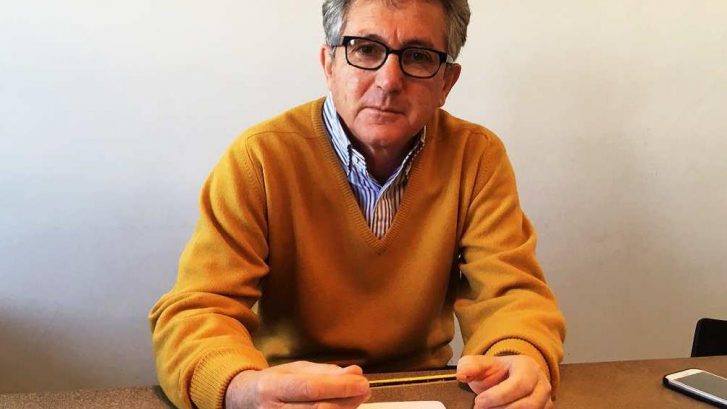Short Interview with Massimo Cianciullo
The history of Cianciullo Marmi began four generations ago. What has characterised these generations?
Towards the end of the 19th century, the founder Antonio Baldi, a sculptor and craftsman with a degree from the Academy of Fine Arts, distinguished himself for his initiative and entrepreneurship.
Between the turn of the 20th century and the end of World War II, his grandchildren Bonaventura and Cianciullo Carmine further developed the manufacturing and commercial side of his business.
The following generation, in the 60s, was represented by Ugo Cianciullo, the son of Bonaventura, who formed the current company in Salerno and boosted trade with the expansion to foreign markets.
The current generation, Paola and Massimo Cianciullo, took over in the early 80s at the time of the second economic boom, and favoured an expansion into the markets of the USA and Europe while establishing the company’s firm position in the Italian market.
Innovate to compete?
Innovation is now a whole new ball game; it is no longer about a simple entrepreneurial spark that can make a product an easily reproducible work of art. Innovation means to first change one’s mindset and be willing to take on the risks associated with new horizons, and not sit idly by but continue to be inspired to build and invent. Cianciullo Marmi lives for innovation as much today as it did yesterday, and will continue to do so.
What should the modern-day entrepreneur do to be competitive in the field of architecture and interior design?
He should be conscientious, work out the production processes and the costs of construction involved, and must ensure better distribution and know how to communicate.
What are the critical issues of today?
The weakness of the sector lies in the two latter stages, distribution and communication. Communication requires continuous updating of the product and its various forms. Distribution requires widespread presence in the target markets.
What is the best approach to production for those who work with marble?
We begin with the research and selection of raw materials, and then offer the benefit of our skills and expertise to help architects and designers best harness their creativity for their projects.
How do you see the prospect of Italian businesses?
Italy needs an industrial future that is a long time coming! Italian companies are conditioned by globalisation and may yet emerge again if they focus on quality, excellence and broadening of the scope of production. Entrepreneurial Italy will have to work harder than ever before to attain the levels of widespread well-being to which we were formerly accustomed.
Is there a solution?
I think it is necessary to jump-start a spending power, currently blocked by the austerity policy.
What is your opinion of Made in Italy?
It is to be promoted nationwide. Its success is down to creativity, design, quality and entrepreneurial drive, all intangible values that meet non-rational desires better than any others, and this has previously been possible thanks also to competitive labour costs and a favourable foreign exchange rate. The world of Made in Italy has suffered on three fronts: a growth in labour costs (from 2002 to date, these have gone up 18% in Italy but down 8% in Germany), a weak position on the currency markets, and a financial and economic crisis (in 2008) that has reduced consumption on traditional markets. To extricate ourselves from this, we need a competitive industrial policy.
The crisis?
It is a crisis to be interpreted as a global trap: an economy gone mad, a machine “governed” only by the lack of rules desired only by a few speculators, and an impersonal sovereignty of a mere game of playing with capital.
What change do you foresee?
Change will be a very long and slow process. There will definitely be a need to review all the welfare systems to which we are accustomed. We must hope that the system can withstand this new transition. The task of the sovereign states will be to lead and follow change to avoid any dangerous repercussions.
And Europe?
Europe is currently an aggregate of countries where the strongest, and Germany in particular, exercise their hegemony over the others. Germany and the stronger states will in fact be the ones forced to revise their economic policies, or risk an implosion that could damage first their autonomy and then that of Europe. There is a need to step up and take forward the process of expansion beyond Europe.
What hope do we have?
To deconstruct and then rebuild, starting with the real economy. This reasoning leads me to hope that we can still build a future for our country, supporting the real economy and rebalancing it with the financial one. Change will be possible when the market, also through the medium of politics, will overcome distributional inequalities. The system will have to develop greater institutional credibility, modernising the concept of the country.
The future?
It belongs to the young; I believe the under 30s will be those who’ll change the future. I see them, I listen to them and I respect them. They are growing up with the fear of insecurity, with the desire to change and with the energy of their age. I see them facing up to collaborative competition that produces positive effects with a view to rebuild our country.

